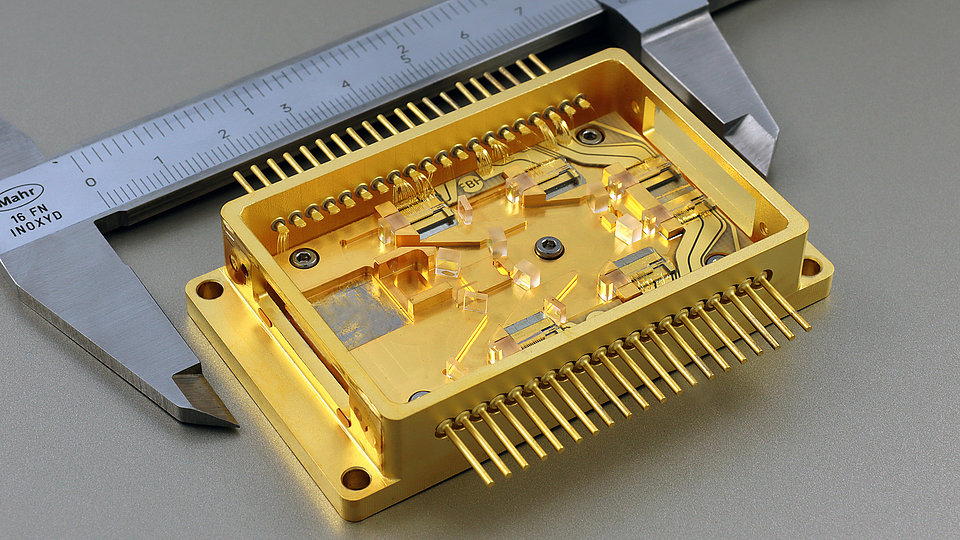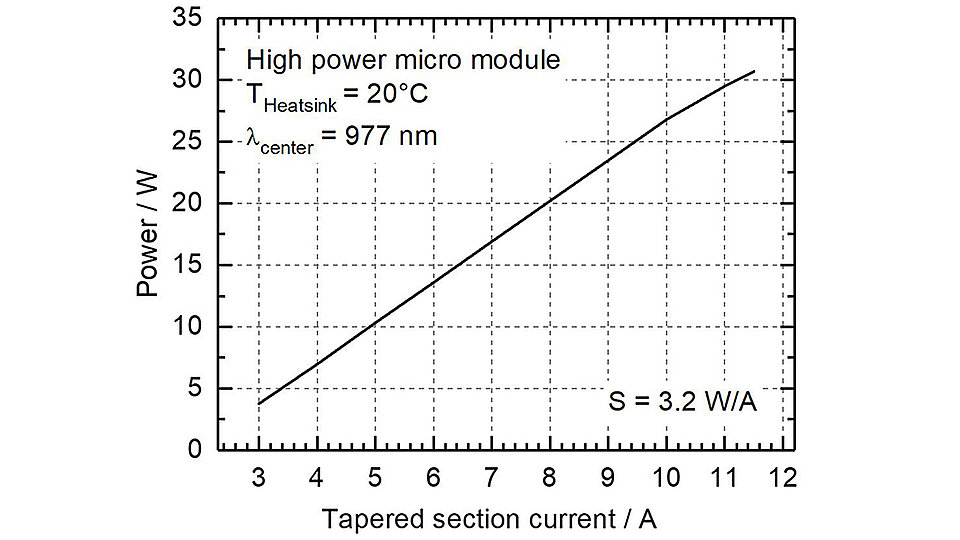Micro-integrated high-power infrared laser source for direct material processing
For direct material processing, high optical output powers with excellent beam qualities are necessary. Due to the unbeatable advantages such as efficiency, lifetime and compactness, diode lasers are often used.
The Ferdinand-Braun-Institut has now succeeded in developing a miniaturized laser beam source with a footprint of only 7.6 x 5.4 cm² with more than 30 W output power in continuous wave mode at a central wavelength of 977 nm. The high output power was achieved while maintaining an excellent beam quality factor of M² < 3 in both beam axes.
Based on the Bragg grating stabilized tapered diode lasers with reliable output powers in the watt range at high beam qualities [1], six of these laser beams were combined almost loss-free.
Coupling of 6 single laser emitters was achieved by utilizing the spectral and polarization properties of every single source. Due to the Bragg grating supported wavelength stabilization, the spectral width of every single laser is narrow and precisely tuneable. Using these features, two wavelength multiplexing steps were implemented which combine 3 laser beams into a multispectral output. The individual lasers have a spectral spacing of 5 nm, which require precisely adjusted spectral filters in order to combine the laser beams. The multiplexed beam is then switched in the direction of polarization by 90° to enable coupling with a second multiplexed beam. The second beam is therefore unaltered in polarization. A customized thin film polarizer is utilized to enable high coupling rates for the given spectral range of 10 nm.
The complete setup is micro-integrated into an FBH-developed butterfly housing with a footprint as small as 41 cm² as seen in Fig. 1. Due to the close vicinity of the single emitters, it was necessary to calculate the ideal laser arrangement within the module to minimize thermal crosstalk effects. Therefore, FEM calculations were carried out and calibrated using already existing setups. As seen in the power characteristics curve in Fig. 2., no mature rollover effects are visible even at high output powers, which support the laser arrangement and cooling concept. To ensure that the generated optical power does have a possibly high spatial beam quality, each combination step has to be tuned precisely. Each beam is directed such that spatial and angular properties are in highest overlap with the coupled beam. With the described specifications a key application of this micromodule is direct material processing. The developed micromodule features excellent output characteristics and a small package size at the same time. Therefore, applications can be addressed, which have so far been not been accessible by laser diode powered devices. To the best of our knowledge no comparable micromodule with the given optical output has been presented. The module concept can furthermore be adapted to different wavelengths within in the near-infrared spectral area.
The presented results were achieved within the project “Micro module for cw to femtosecond machining” (E! 11440 MiFeM) supported by the eurostars™ funding program.

